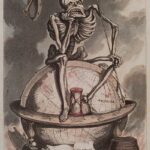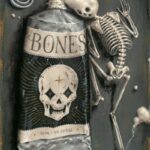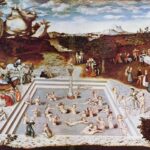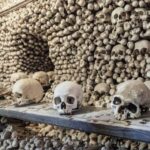A headstone, tombstone or gravestone is a marker, normally carved from stone, placed over or next to the site of a burial.
Originally, a tombstone was the stone lid of a stone coffin, or the coffin itself, and a gravestone was the stone slab that was laid over a grave. Now all three terms are also used for markers placed at the head of the grave.
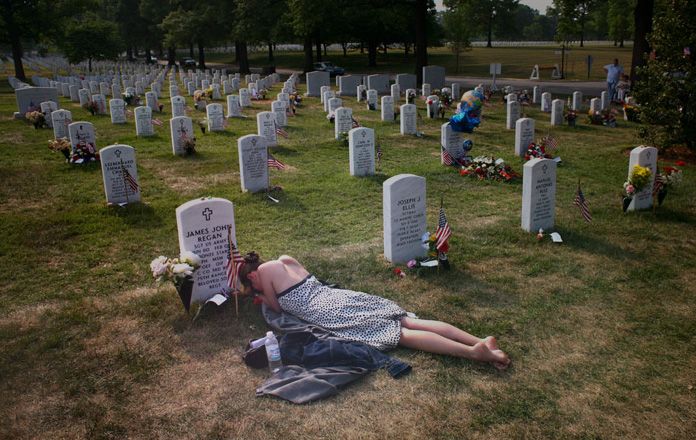
These markers are often elaborately carved into crosses, or may depict angels, emblems, symbols of a trade or status, or symbols of death (skulls or winged skulls called death’s heads may be carved on old headstones, for example). Others bear inscriptions; frequently these are quotations from religious texts, or epitaphs in praise of the deceased. The basic information on the headstone generally includes the name of the deceased and their date of birth and death. Such information can be useful to genealogists and local historians.
Graves and any related memorials are a focus for mourning and remembrance. The names of relatives are often added to a gravestone over the years, so that one marker may chronicle the passing of an entire family spread over decades. Since gravestones and a plot in a cemetery cost money, they are also a symbol of wealth or prominence in a community. Some gravestones were even commissioned and erected to their own memory by people who were still alive, as a testament to their wealth and status.
Gravestones which are well carved in hard-wearing stone may weather many centuries exposed in graveyards and still remain legible. Those which are fixed on the inside of churches, on the walls or on the floor (frequently as near to the altar as possible) may last much longer: such memorials were often embellished with a “monumental brass”. Cemeteries do, however, require maintenance, as over the centuries stones may topple and injure people, or graves may simply become overgrown and their markers lost or vandalized.
Crematoria frequently offer similar alternatives for families who do not have a grave to mark, but who want a focus for their mourning and for remembrance. Carved or cast plaques inside the crematorium for example may serve this purpose.
Modern gravestones may include framed photographs of the deceased; photographic images or artwork (showing the loved one, or some other image relevant to their life, interests or achievements) can now be engraved onto smooth stone surfaces. Many cemeteries, however, especially those surrounding historic churches or in conservation areas, have strict regulations as to the appropriate materials for a memorial, and may also forbid the use of artificial flowers in a floral tribute.
Emblems on tombstones
Elaborately carved grave slab at Shebbear (Devon, England) showing a skull sprouting flowering shoots, as a symbol of resurrectionSpecial emblems on tombstones indicate several familiar themes in the Christian faith. Some examples are:
- Anchor – Steadfast hope
- Arch – Rejoined with partner in Heaven
- Birds – The soul
- Cherub – Divine wisdom or justice
- Column – Noble life
- Broken column – Early death
- Conch shell – Wisdom
- Cross, anchor and Bible – Trials, victory and reward
- Crown – Reward and glory
- Dolphin – Salvation, bearer of souls to Heaven
- Dove – Purity, love and Holy Spirit
- Garland – Victory over death
- Gourds – Deliverance from grief
- Heart – Devotion
- Horseshoe – Protection against evil
- Hourglass – Time and its swift flight
- Ivy – Faithfulness, memory, and undying friendship
- Lamb – Innocence
- Laurel – Victory
- Lily – Purity and resurrection
- Mermaid – Dualism of Christ – half God, half man
- Oak – Strength
- Olive branch – Forgiveness, and peace
- Palms – Martyrdom
- Peacock – Eternal life
- Poppy – Eternal sleep
- Rooster – Awakening, courage and vigilance
- Shell – Birth and resurrection
- Six pointed star – The God
- Skeleton – Life’s brevity
- Snake in a circle – Everlasting life in Heaven
- Swallow – Motherhood
- Broken sword – Life cut short
- Crossed swords – Life lost in battle
- Tree trunk – The beauty of life
- Triangle – Truth, equality and the trinity
- Shattered urn – Old age
- Weeping willow – Mourning, grief

